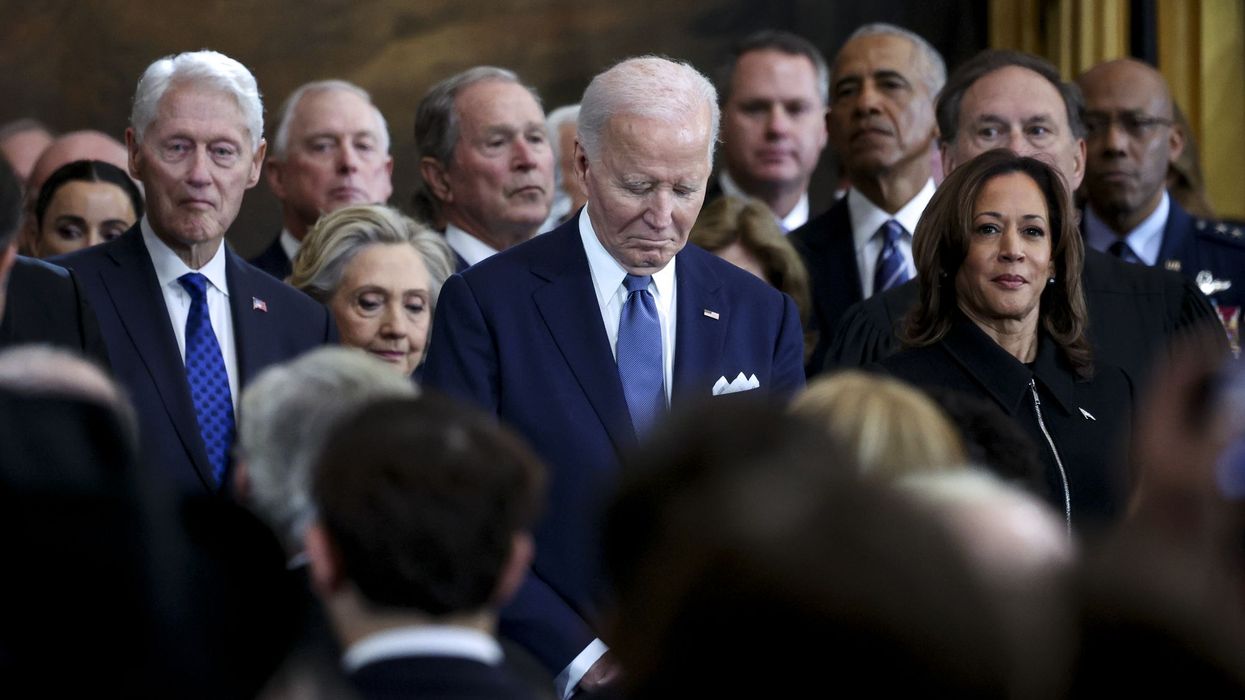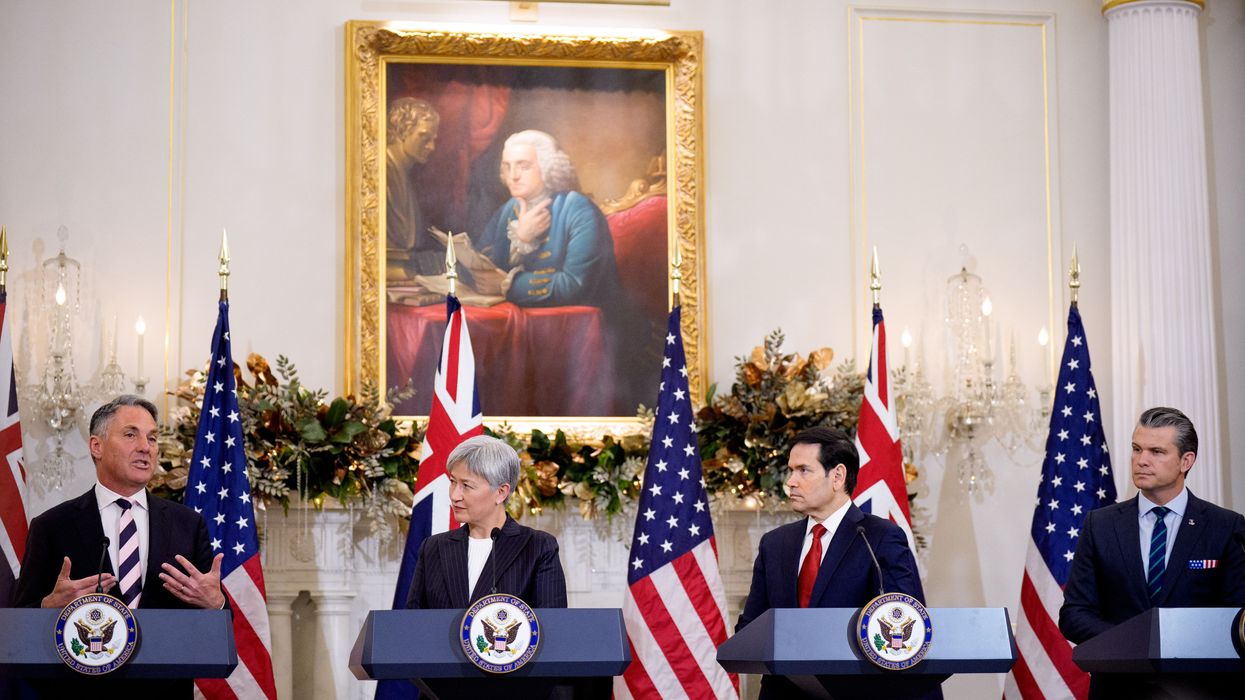How Corporate Democrats Made Trump Possible: A 10-Year Timeline
Saving the country from autocracy requires recognizing—and then overcoming—the chokehold that Democratic leaders have on the party.
Ten years after Donald Trump first ran for president, he stands at the helm of Titanic America. How did this happen?
No factors were more pivotal than the outlooks and actions of the Democratic Party leadership. Scrutinizing them now is vital not only for clarity about the past. It also makes possible a clear focus on ways to prevent further catastrophe.
Here’s the actual history that corporate Democrats pretend didn’t happen:
2016: Hillary Clinton offers more of the status quo. Her allies in the Democratic Party pull out all the stops so she can win the party’s presidential nomination. With a big assist from the Democratic National Committee, she prevails over the strong primary challenge from Bernie Sanders, but her campaign trail goes downhill from there. After rallying behind Sanders’s genuine progressive populism, many young people don’t trust the pseudo-populism of Clinton’s campaign. She has earned a millennial problem, and it prevents her from becoming president.
2017: Democratic Party leaders can hardly blame themselves or their nominee for the virtually unbelievable circumstance of the Trump presidency. A critical focus on Clinton’s coziness with Wall Street won’t do. Neither will critiquing her thinly veiled contempt for the progressive wing of the party. But blaming Trump’s victory on Russia becomes an obsessive theme.
2018: The Democratic leadership is mapping out a battle plan for the midterm elections in November. At the same time, a key priority is to thwart the inside threat posed by progressive forces. Establishment Democrats are keeping a watchful eye and political guns trained on Bernie Sanders.
2019: Democrats take control of the House, and a large cast of political characters is off and running for the party’s presidential nomination. Sanders and Senator Elizabeth Warren are at the left edge, while more than a dozen others jostle for media attention. For elites determined to retain undemocratic power, seeing either Sanders or Warren in the Oval Office would be the worst possible outcome.
2020: Early in the year, the economic populism of the Sanders campaign continues to catch fire, while many forces team up to function as fire extinguishers. The Democratic Party establishment acts to smother the grassroots blaze. After Joe Biden’s fifth-place finish in the New Hampshire primary puts his campaign on life-support, rescue comes eighteen days later from South Carolina, where Biden wins a landslide primary victory—and then several corporate-friendly contenders quickly drop out of the race and effusively endorse him. When Biden clinches the nomination, progressives largely close ranks behind him to defeat Trump. Biden squeaks through.
2021: President Biden’s first year includes backing and signing legislation with real benefits for tens of millions of Americans. But his resolve dissipates. Before the end of the year, he abandons Build Back Better legislation that would have been transformational. Notably, Biden withdraws all US troops from Afghanistan in late summer—but overall he opts to fuel militarism, with ever-higher Pentagon spending instead of devoting adequate resources to meet human needs and protect nature. The president goes full speed ahead with “modernization” plans for ever more dangerous nuclear weapons that already have a pre-overrun price tag of $1.7 trillion.
2022: Biden relapses into his customary “moderate” political mode, while his capacity to speak coherently weakens. Party discipline, internalized by Democrats in Congress, precludes independent-minded leadership as they begin to proclaim that Biden should run for re-election. Conformity of groupthink and fear of retribution from the White House keep people quiet.
2023: A real-life Shakespearean tragedy unfolds as Biden throws down a gauntlet to run for re-election even while his mental frailty becomes more evident. Enablers ignore the party’s base, with polls continuing to show that most Democrats don’t want him to be the next nominee (including 94 percent of Democrats under 30). A common canard—pushed by Biden’s coterie of sycophants—contends that because he defeated Trump once, he’s the best person to do it again; the claim ignores the fact that Trump 2020 represented an unpopular status quo, and Biden 2024 would represent an even more unpopular status quo, as “right track / wrong track” polling makes crystal clear. Soon after Hamas attacks Israel on October 7 and the Israeli military starts its siege of Gaza, Biden begins to further alienate many of his party’s usual voters by massively boosting US military aid as the slaughter of Palestinian civilians escalates.
2024: Among top Democrats, denial about Biden’s evident cognitive infirmity grows along with the infirmity itself. Even after Biden’s disastrous debate performance in late June, the political reflex of dissembling prevents him from bowing out for another 28 days. That leaves 107 days for the newly installed nominee Kamala Harris to pick up the pieces before Election Day. At first it seems that she might find ways to depart from coming across as Biden’s yes-woman, but there is no such departure. Nothing epitomizes the Harris campaign’s moral collapse more than her insistence on echoing the Biden line about Gaza while the US continues to arm Israel’s military as it methodically kills Palestinian civilians. In the process, Harris chooses to ignore both human decency and polls showing that far more voters would be likely to cast their ballots for her if she were to come out against sending more armaments to Israel. Electoral disaster ensues.
Last month, two events showed the huge contradiction between the potential for true progressive change and the dire reality of feckless Democratic Party leaders. When socialist Zohran Mamdani won election as mayor of New York after running as a Democrat, he said: “If there is any way to terrify a despot, it is by dismantling the very conditions that allowed him to accumulate power. This is not only how we stop Trump; it’s how we stop the next one.” A week later, eight members of the Senate’s Democratic caucus surrendered to Trump, betraying efforts to defend Obamacare and a healthcare status quo that still leaves tens of millions uninsured or underinsured. The capitulation meant that the nation’s healthcare crisis would get even worse.
Craven and conformist Democratic Party leadership—coloring inside corporate lines while enmeshed with rich backers—hardly offers a plausible way to defeat the Trump forces, much less advance a humane political agenda. Saving the country from autocracy requires recognizing and overcoming the chokehold that Democratic leaders have on the party.
The timeline above is drawn from my new book about the 10-year political descent into the current inferno, The Blue Road to Trump Hell, which is free as an e-book or PDF at BlueRoad.info.



